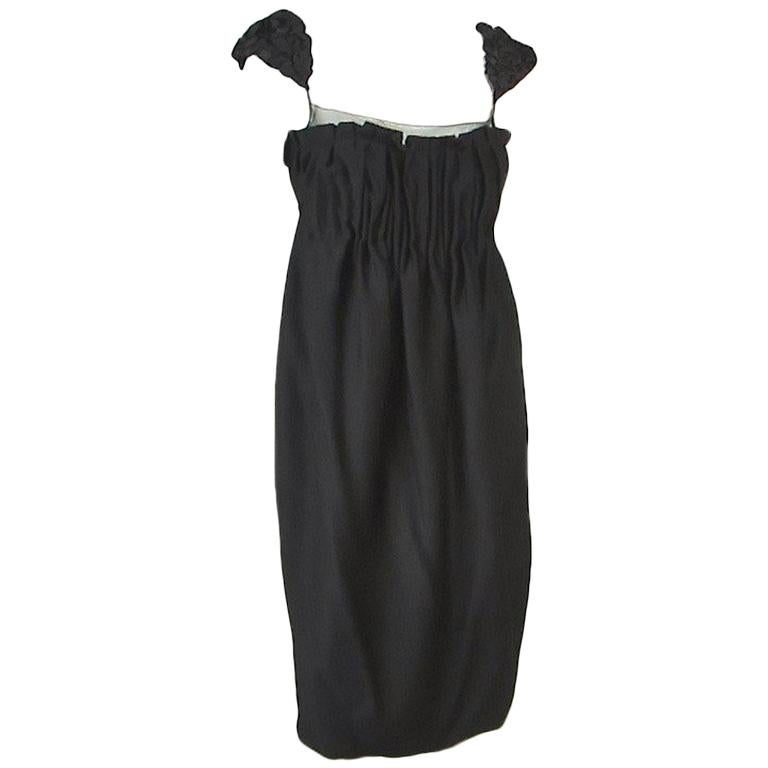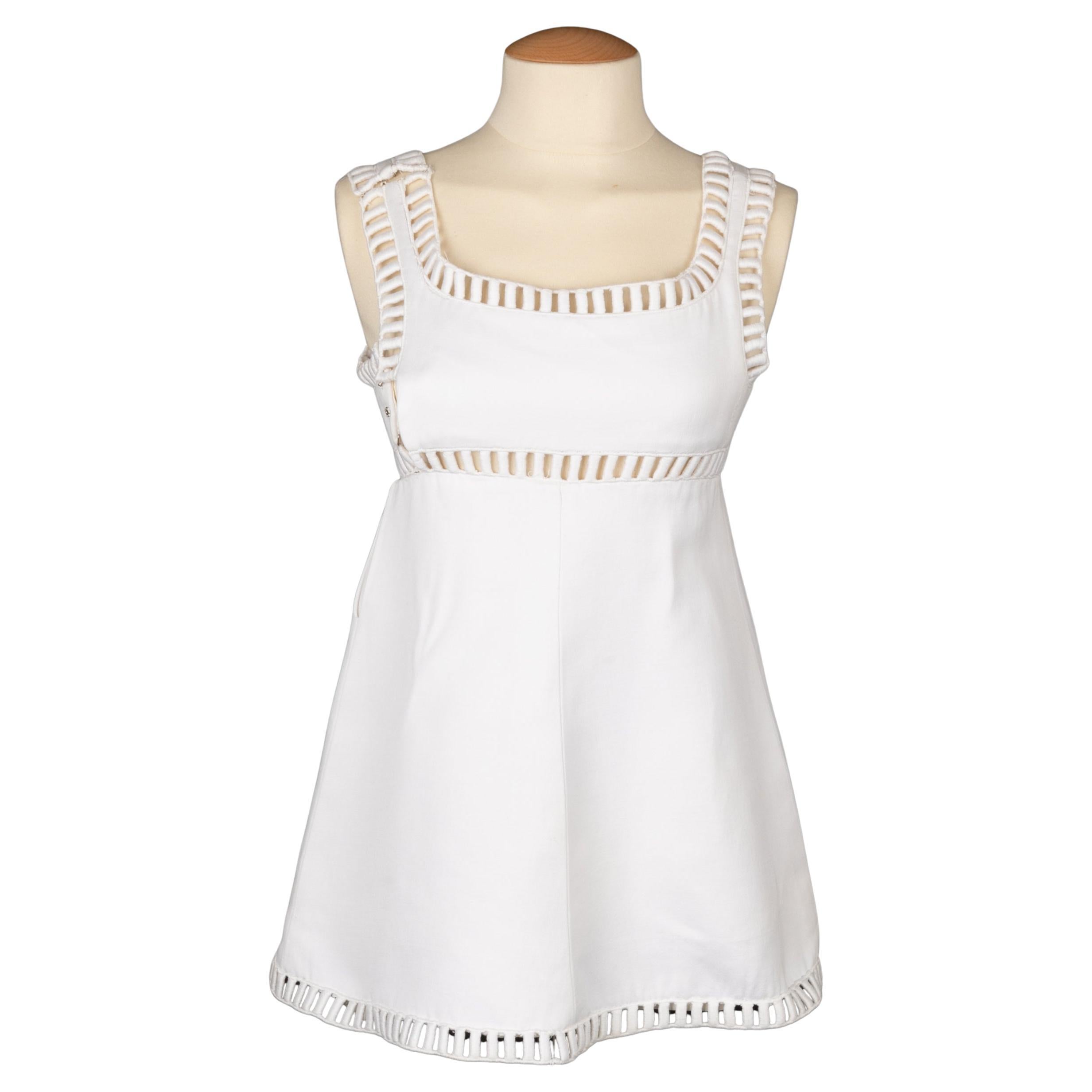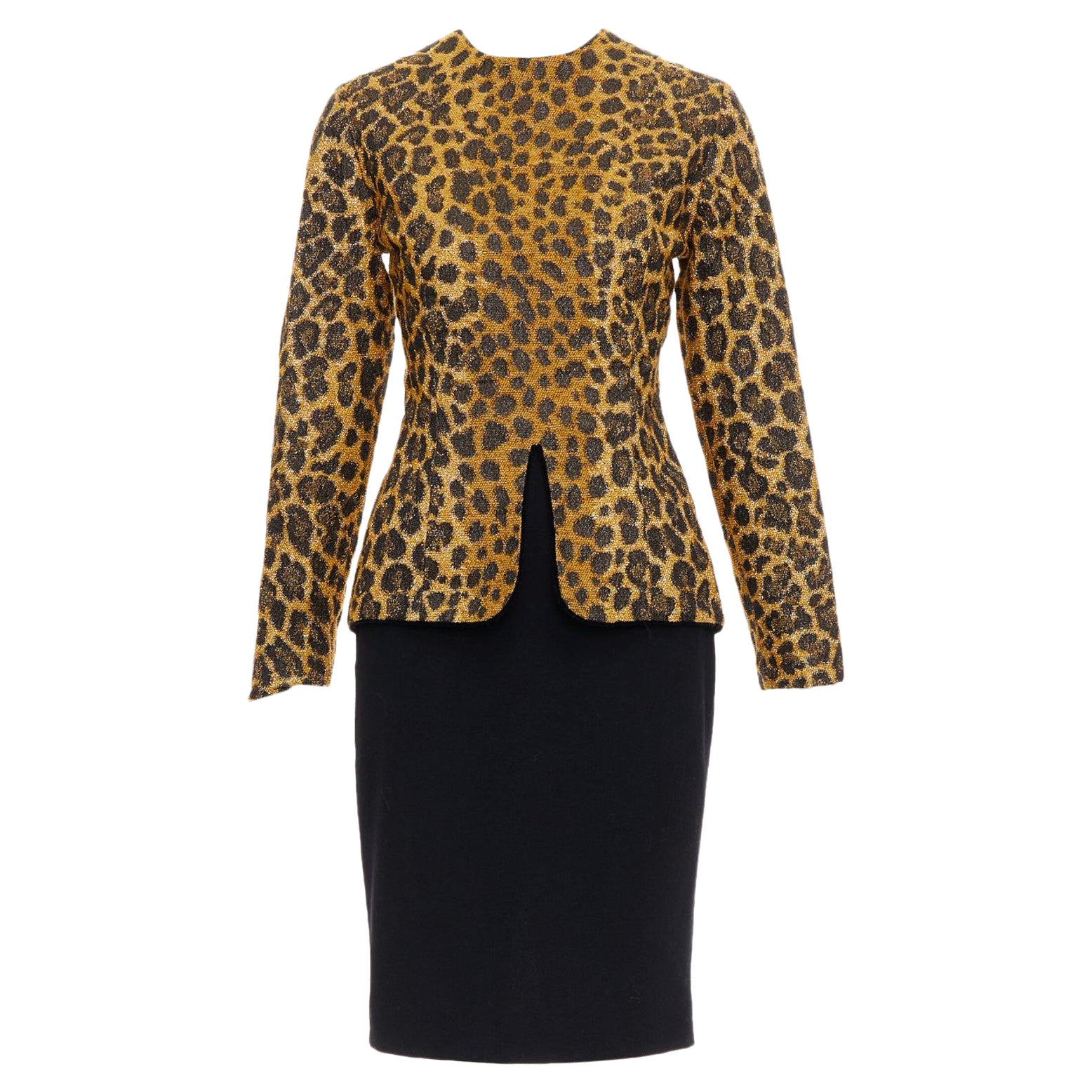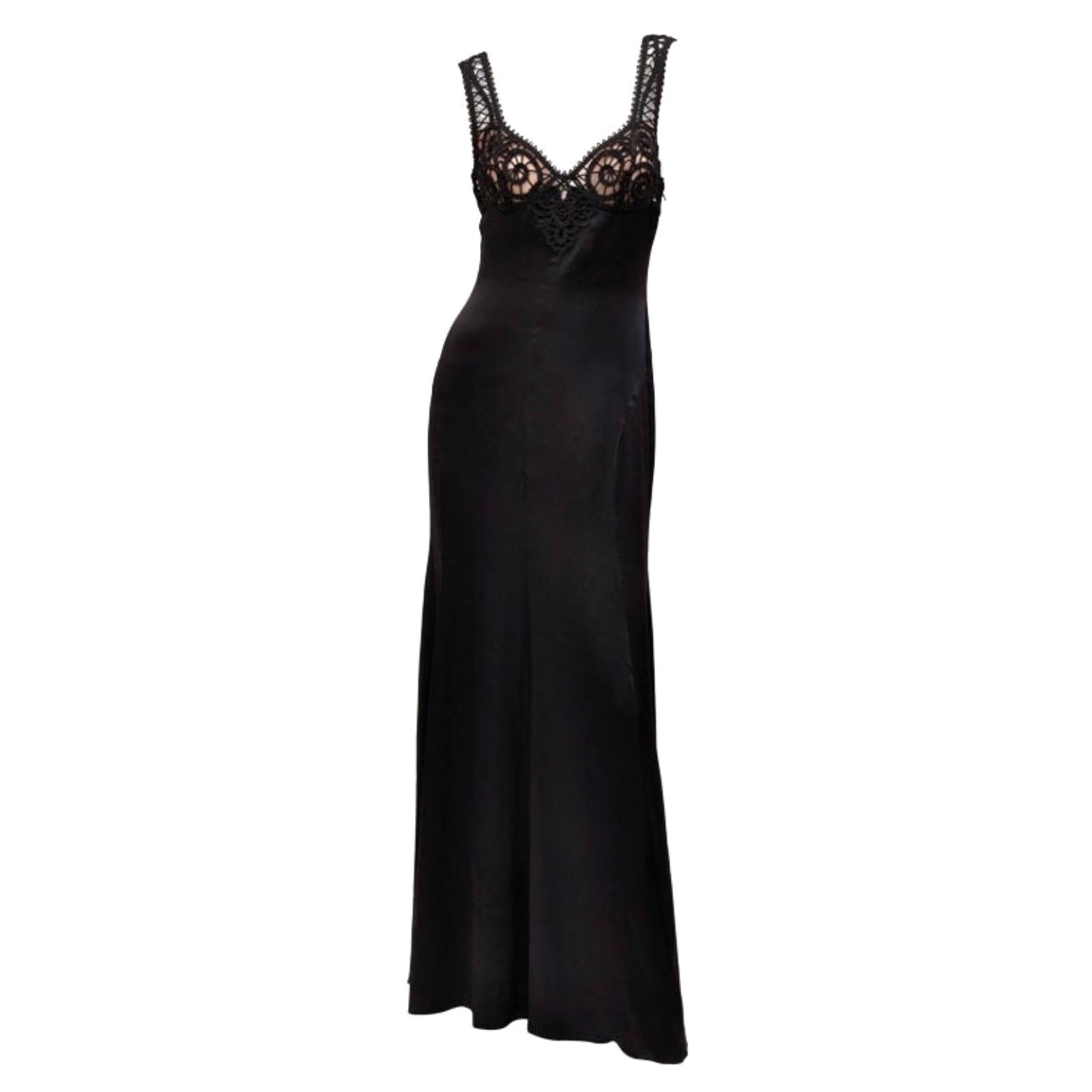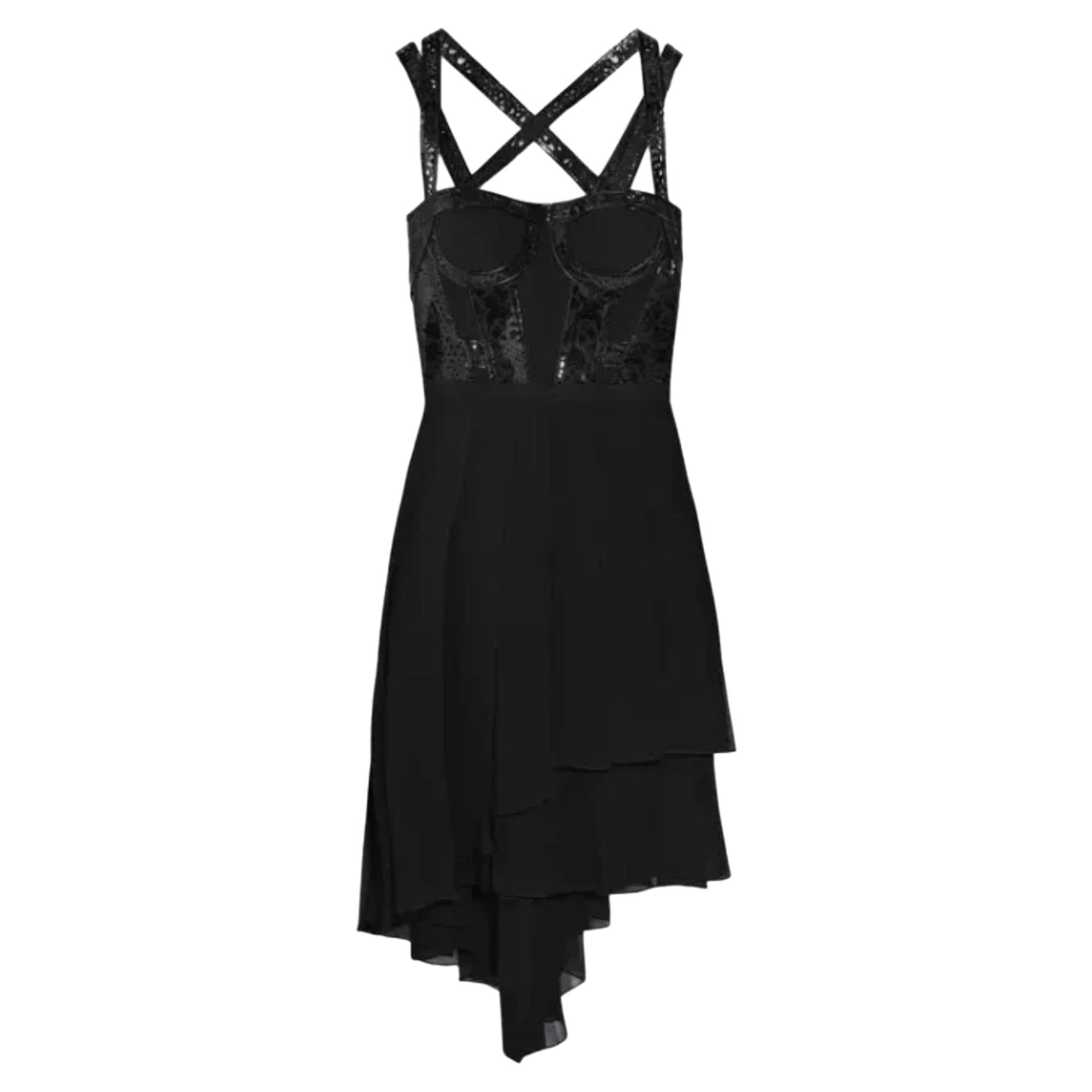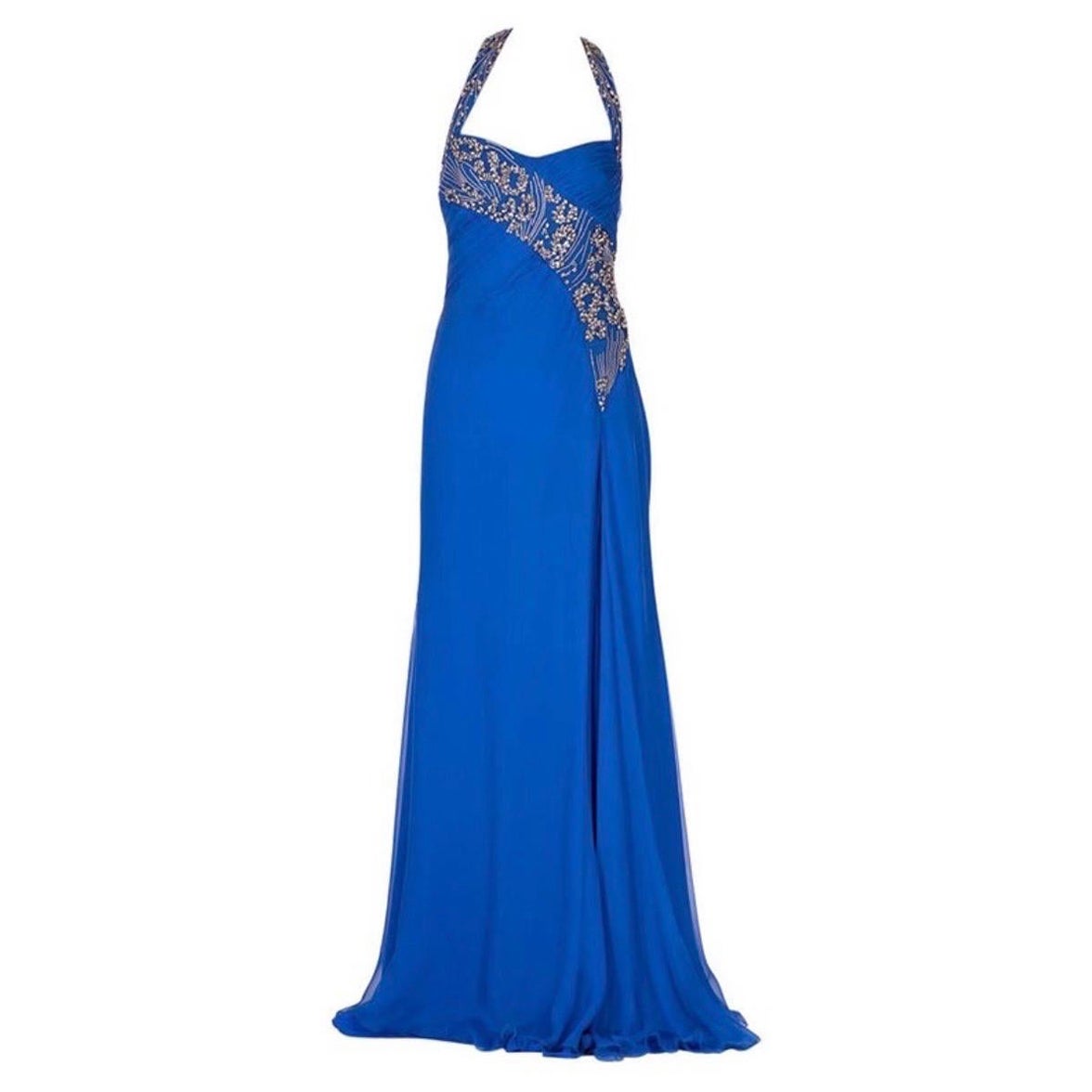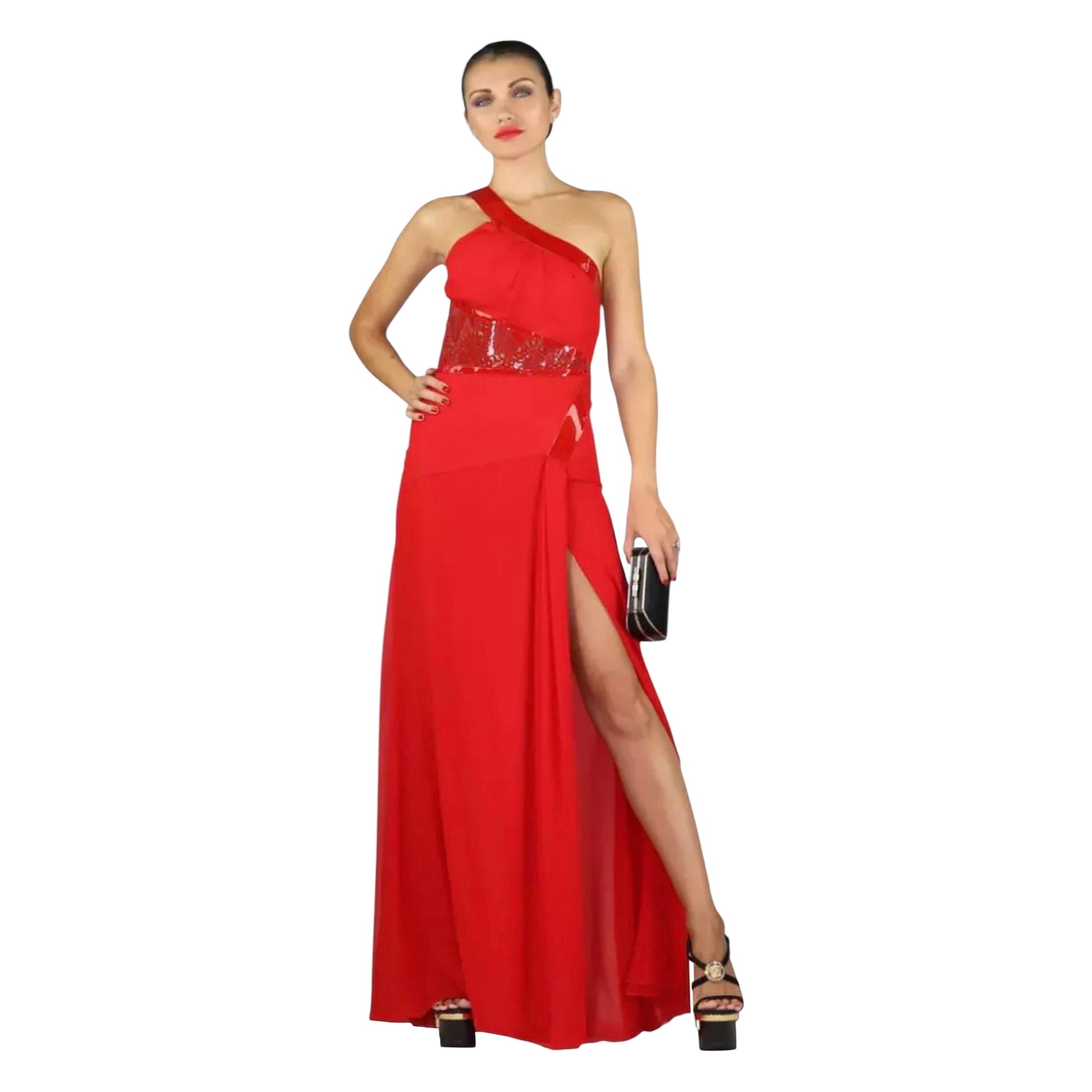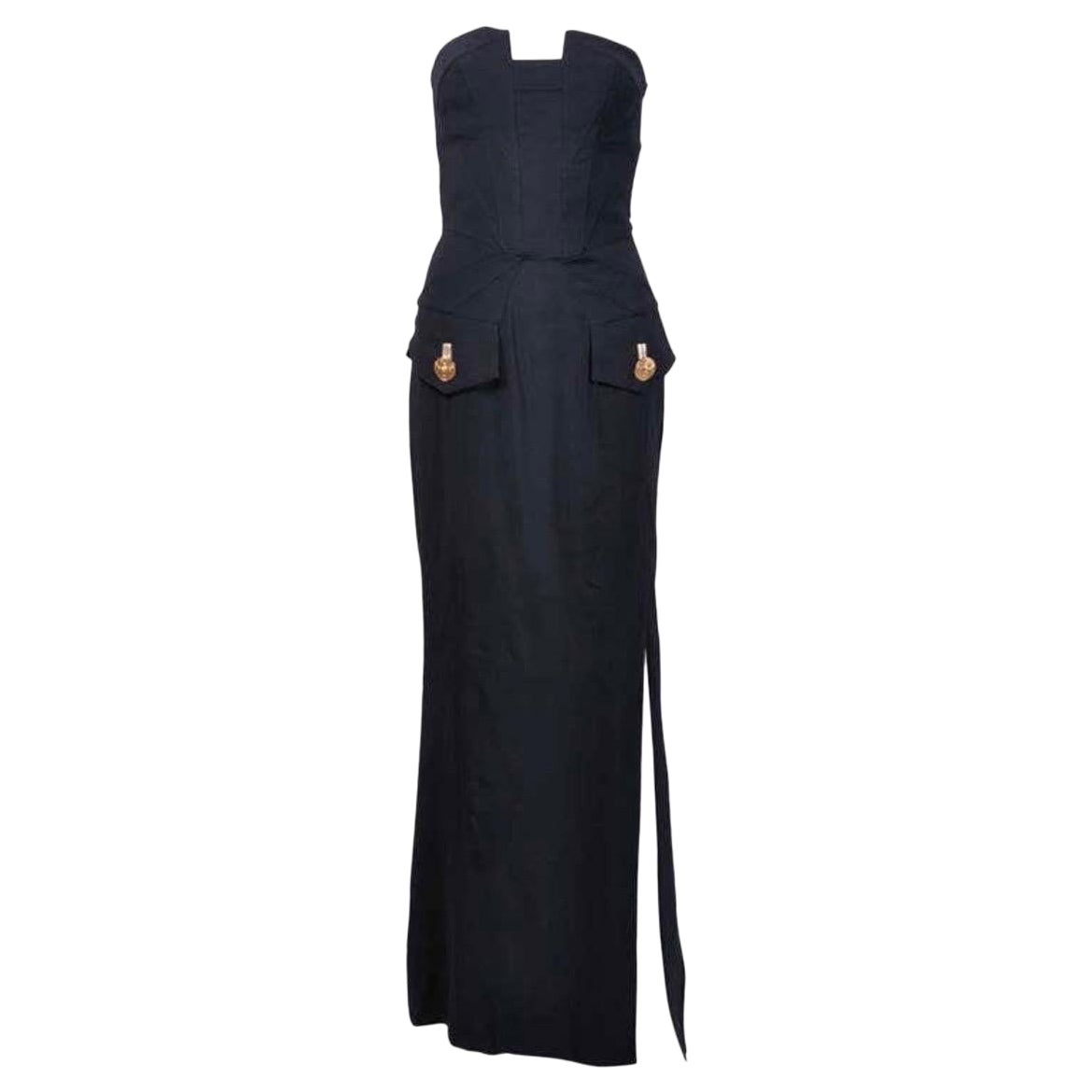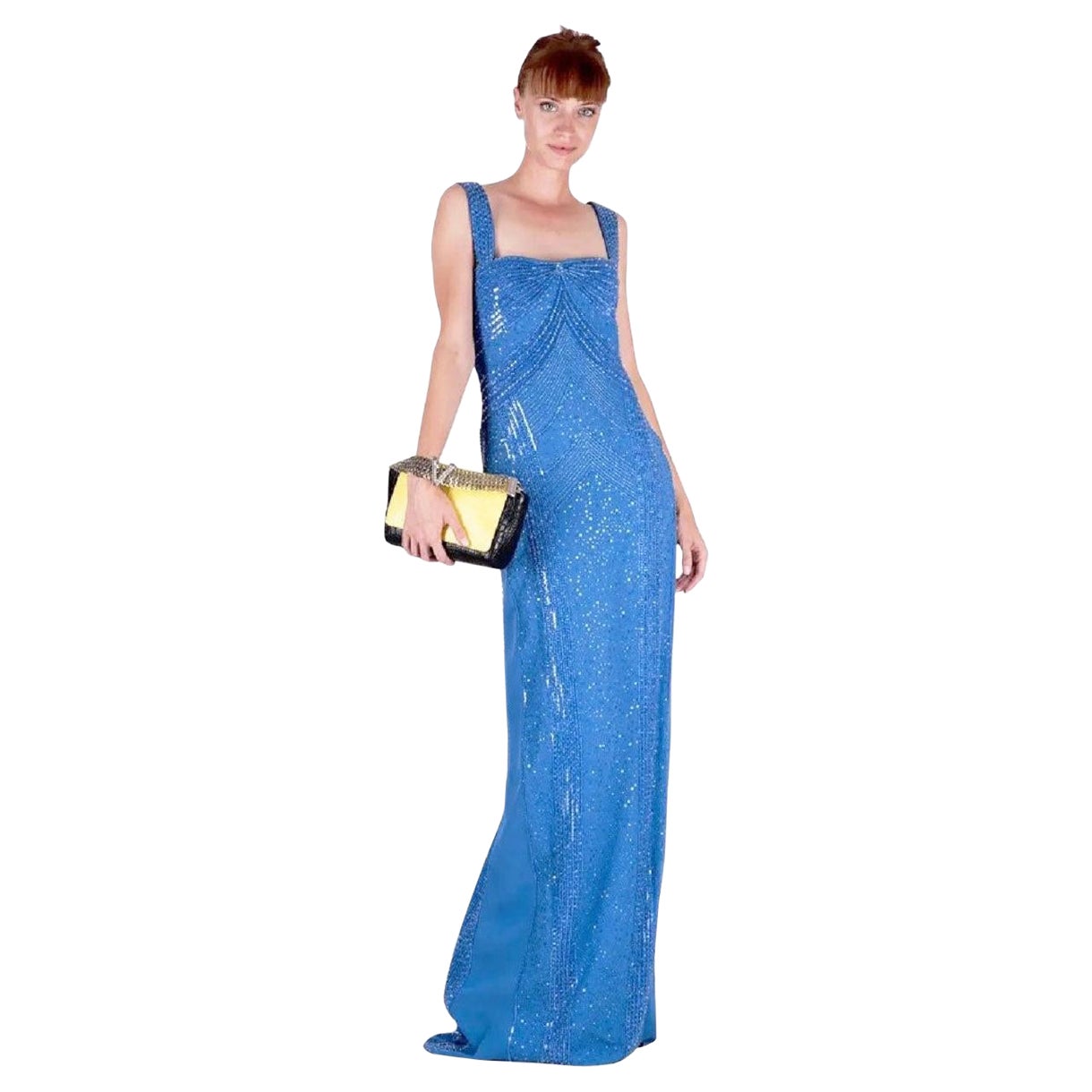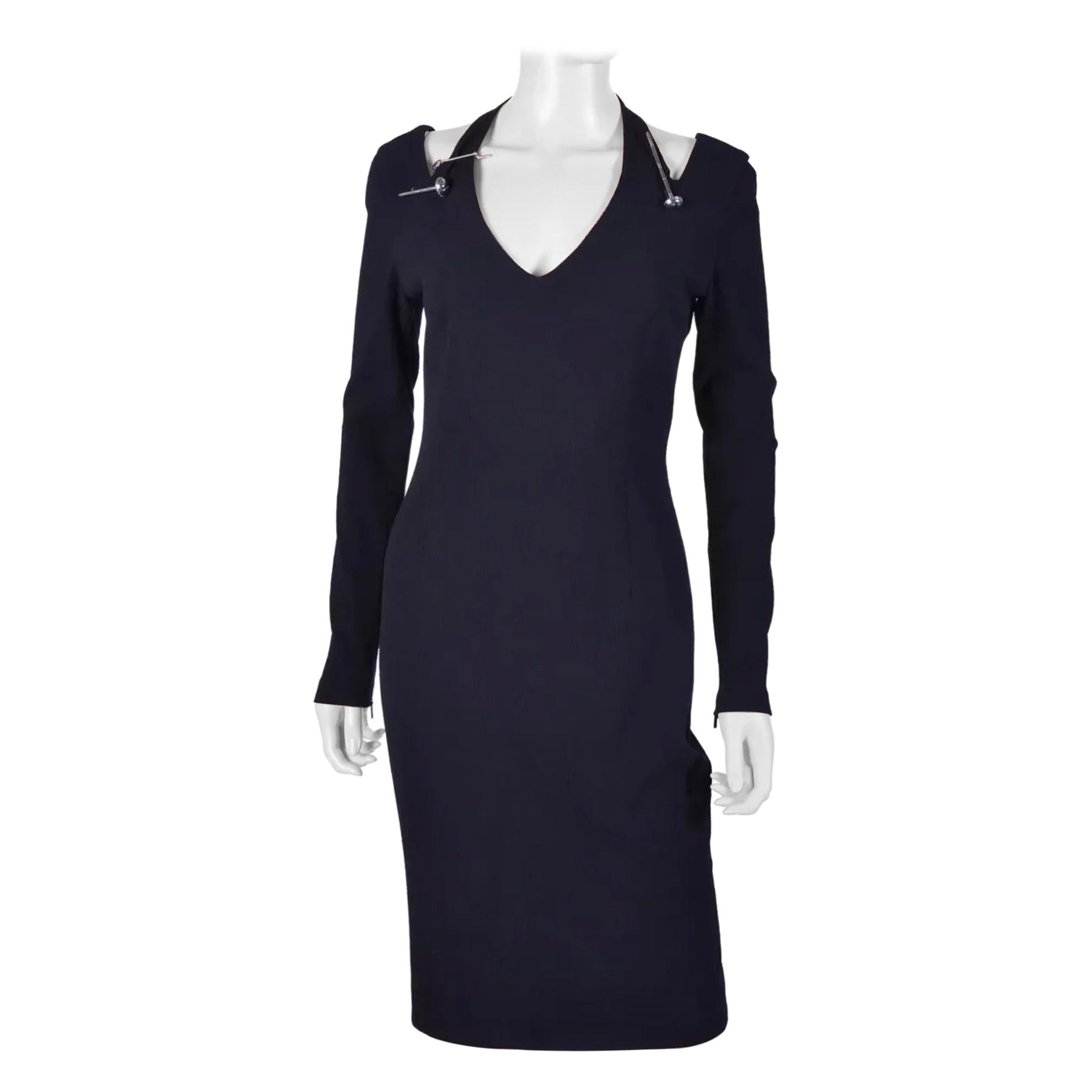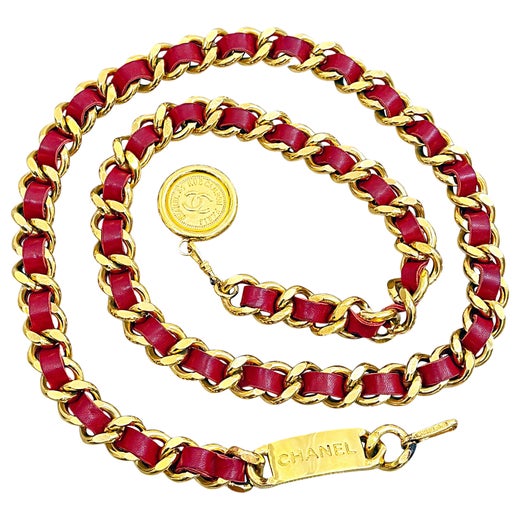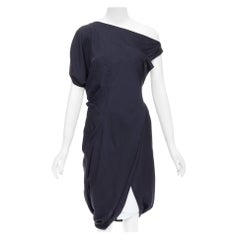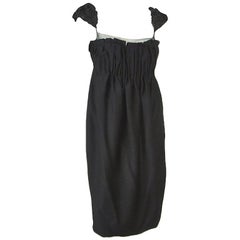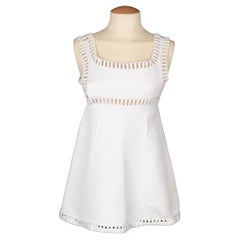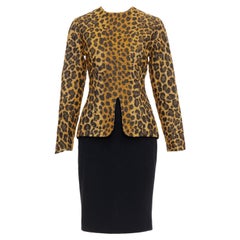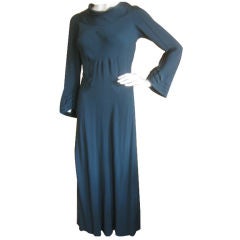
Chanel 1930's Bias Cut Little Black Dress ; the original LBD !
View Similar Items
Chanel 1930's Bias Cut Little Black Dress ; the original LBD !
About the Item
This is such a beautiful dress, the photos don't begin to capture it's charm. Bias cut with refined detailing, many of which Karl is still revisiting in his current Chanel.
The Knife pleated cuff's with working button holes is still a current Chanel technique.Also a photo of the hand basted seam's inside the dress.
This is in excellent condition.
I have tried to give as many photos as possible to give accurate details, like the bias cut seaming, including the two back bias seams with hook and eye closures.
A remarkable and rare piece, originally imported for San Francisco's finest woman's specialty store , Nelly Gaffney's.
Measurements;
Bust; 38"
Waist 30"
Hips 40"
Sleeve 23"
Length 50"
About Chanel, and the introduction of the Little Black Dress.
From The Fashion Encyclopedia;
Introduced in the late 1920s and first popular in the 1930s, the little black dress—a slim-fitting dress of varying length worn for dinners, cocktail parties, and evenings out—was one of the most popular fashions of the twentieth century. Along with blue jeans and the T-shirt, it is one of the most influential and important garments of the twentieth century.
The little black dress made its debut in May 1926, with a pen and ink drawing in Vogue magazine by designer Gabrielle "Coco" Chanel (1883–1971). The magazine editors called the dress "Chanel's 'Ford,'" comparing the dress to the simply designed, economically priced black Ford Model T automobile.
The dress caused an instant uproar in the fashion world. Choosing black as a fashionable color was itself startling. Before Chanel, black clothing was associated with either the clergy or servants, or with mourning. But the simplicity and economy of the dress appealed to women of the 1930s Great Depression era, a time of severe economic turmoil after the stock market crash of 1929. With this simple item in their wardrobes, accessorized only with a string of pearls or a pair of high-heels, middle-class women and high-society ladies could be equals. As Chanel said, "Thanks to me they [non-wealthy] can walk around like millionaires."
One of the first celebrities to popularize the little black dress was the cartoon character Betty Boop, the squeaky-voiced, well-proportioned creation of animator Max Fleischer (1883-1972). Wallis Simpson (1896–1986), the American who married the former king of England in 1937, also wore the dress and reportedly said, "When the little black dress is right, there is nothing else to wear in its place," as quoted by Valerie Mendes.
- Designer:
- Brand:
- Dimensions:Marked Size: Small (US)
- Place of Origin:
- Period:
- Material Notes:Black Silk Crepe
- Condition:Excellent, I can not detect a single flaw.
- Seller Location:Cloverdale, CA
- Reference Number:1stDibs: AU10092058430
Chanel
In the years following the opening of her modest millinery shop, Gabrielle "Coco" Chanel became a pivotal designer of both fashionable casual wear and Paris haute couture as well as an icon and arbiter of 20th-century style with her bob haircut and pearls. Today vintage Chanel handbags, jackets and evening dresses are among the most sought-after clothing and accessories for fashion lovers all over the world.
The first Chanel shop was established in 1910 in Paris on rue Cambon by the young milliner Gabrielle Chanel (1883–1971), who had picked up the nickname “Coco” while working as a club singer. The boutique drew the attention of the Parisian fashion elite who popularized her wide-brimmed Chanel Modes hats. Soon she added a sportswear store in the Normandy resort town of Deauville, where Coco set the tone for her defining sense of style — traditionally masculine garments reimagined for feminine shapes, made from simple jersey fabric.
Effortless and elegant, Chanel's designs promoted comfort and grace in women’s wear that had been dominated in the previous century by complicated layers of fabric and cumbersome corsets. She followed this success with a couture house, opened in 1915 in Biarritz.
But Chanel was not born into a life of glamour. Following the death of her mother, her father left her in an orphanage where she lived until the age of 18. It was there that she learned to sew as well as appreciate the classic pairing of black and white as worn by the nuns.
In 1926, Chanel introduced her first little black dress, reclaiming a color that had once been reserved for mourning and working-class women. That same decade, she debuted her perfume, Chanel No. 5, as well as the Chanel suit with a fitted skirt, inspired by the boxy lines of men’s clothing and employing a sporty tweed.
Chanel closed her fashion operations during World War II, then returned to the industry in 1954 to design for the functional needs of modern women.
Structure and wearability endured in all of Chanel’s clothing and accessories, like the quilted leather 2.55 handbag — a 1955 update of a 1920s-era design — with its gold-chain shoulder strap that freed up a woman’s hands. The 1957 two-tone slingback pumps had a practical heel height while offering a bold statement in the black tip of the shoes. Her collarless jacket reacted against the constricting styles of Christian Dior's New Look, replacing them with a design that was timeless, an instant classic.
After Coco Chanel died in 1971, the brand underwent several changes in leadership, including fashion designer Karl Lagerfeld, who took over as artistic director in 1983. His collections for Chanel displayed his knack for synthesizing old and new, high and low. Lagerfeld revived Chanel ballet flats and thoroughly embraced the classic logo's interlocking CCs, which took the form of a clasp featured on so many of the rare Chanel bags that are much sought after today.
Vintage Karl Lagerfeld designs for Chanel dresses, coats and other clothing of the 1980s, '90s and 2000s riffed on its iconography, accenting a lexicon of Chanel-isms with tastes of the moment. And as the 1990s have become associated with styles adopted by today’s supermodels and influencers, vintage Chanel bags of the 1990s are among the most prized of the brand’s offerings.
Over the years, the company has continued to innovate, such as expanding into ready-to-wear fashion in 1978 and, in 2002, establishing a subsidiary company — Paraffection — dedicated to preserving the heritage skills of fashion artisan workshops. The House of Chanel still operates its flagship on rue Cambon in Paris, where it all began.
Browse vintage Chanel bags, evening dresses, shoes, jewelry and other clothing and accessories on 1stDibs.

